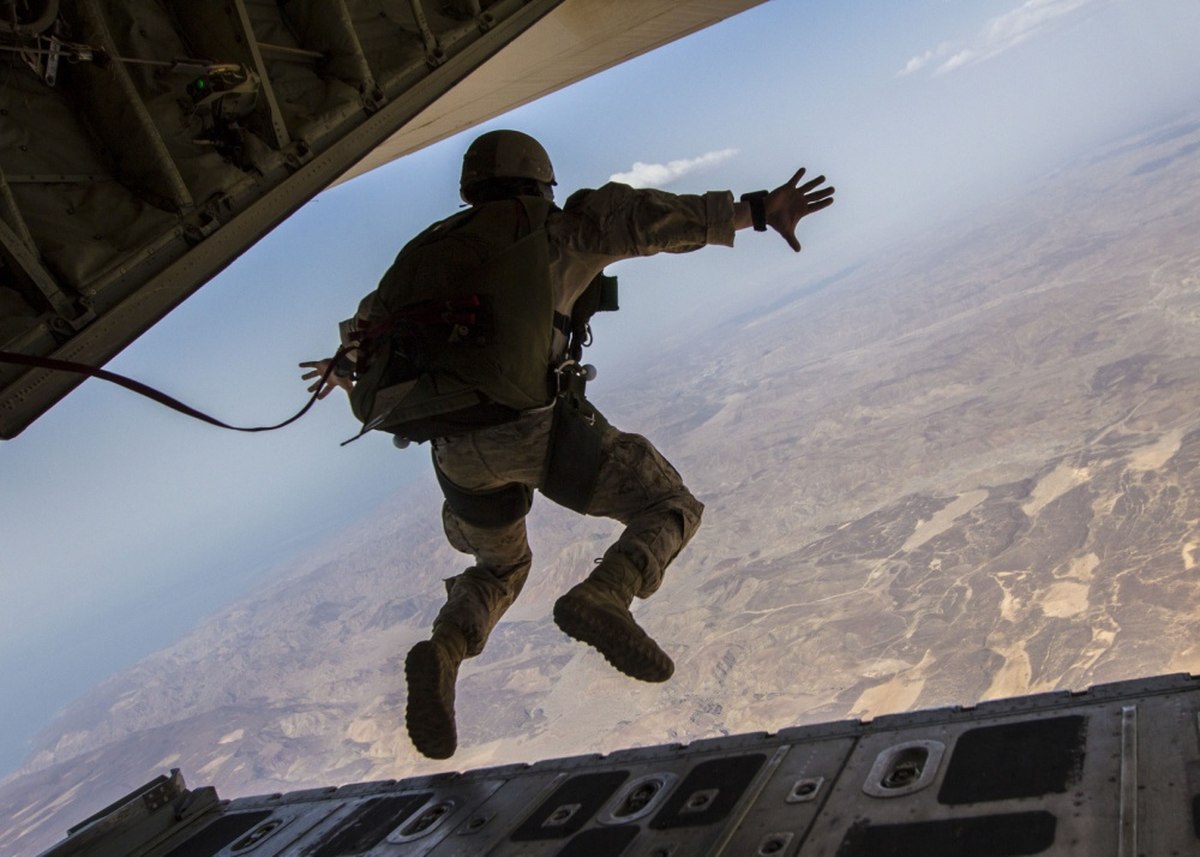The Story of a dream come true
The Basic Parachute Course for members of the Bangladesh Army is conducted by the Special Warfare Wing of School of Infantry and Tactics,Jalalabad Cantonment,Bangladesh.

Training Procedure
The Basic Parachute Course is three weeks long for regular troops. During that time, trainees are instructed in exit, flight and landing techniques. They are required to complete six descents, one at night, to qualify for their 'wings'. Exit training is carried out from full-size mock ups of The Antonov An-32 (NATO reporting name: Cline), a turboprop twin-engined military transport aircraft. In groups of eight, each with its own SWW Jump Master, trainees are taught the techniques of jumping individually and in 'sticks', both with and without equipment. Trainees are taught fight drills while suspended from the hangar roof in parachute harnesses on cables. They learn to control their parachutes while descending, and to carry out emergency measures, such as untwisting their rigging lines, taking the necessary action on colliding with another parachutist, and landing in water. Techniques for landing safely are taught using rubber mats. As trainees become more proficient, the height from which they jump is increased by the use of steps and eventually ramps which they run and jump off. Forward, side and backwards landings are practiced on a six-sided trapeze from which the trainees hang by their hands while being swung in the air. On the command of the Jump Master, trainees let go and perform the appropriate roll on landing.

The next stage involves the fan trainer. Wearing a harness connected to a cable wound round a drum fitted with fan blades, trainees jump from a platform located near the roof of the hangar; as they fall, their rate of descent is controlled to simulate that with a parachute. More advanced training comes with the exit trainer, designed to simulate the effect of slipstream as the parachutist exits the aircraft. The trainer consists of a wooden cabin, mounted on a structure of girders, equipped with doors representing those on the port and starboard side of the AN-32 and C-130 Hercules. On either side cables run from above the trainer to a point near the ground some 55 yards away. Wearing harnesses suspended from them, trainees jump from the trainer and travel the length of the cables in a gradual descent towards the ground, where their progress is arrested by an instructor.
The next stage of the course consists of a parachute descent from a balloon at the dropping zone at Weston-on-the-Green. This is carried out from a height of 2400ft(800m) in what is known as "clean fatigue" - without equipment. Subsequently, trainees carry out their first descent from a C-130 or AN-32 in single 'sticks' of eight without equipment from one door of the aircraft. Their second descent is again in 'clean fatigue', in single 'sticks' of eight or ten. Trainees then make their third descent, jumping in simultaneous 'sticks' of six from both sides of a Hercules. This is followed by a night descent without equipment. Thereafter, descents are made with equipment, initially in a single 'stick' of six, subsequently in simultaneous 'sticks' of eight or ten and finally in the maximum size of 'stick' possible, depending upon the number of personnel on the course.
Parachute Badge
On successful completion of their six descents, trainees are presented with their 'wings' by the Officer Commanding, Special Warefare Wing and return to their units as qualified parachutists.
The Parachute Badge with Wings insignia is only to be worn by a qualified parachutist who has subsequently been on the posted strength of a unit where he may be ordered in the course of his duties to parachute.Those who do not serve with a parachute unit are permitted to wear the Parachute Badge also.

Leave a comment